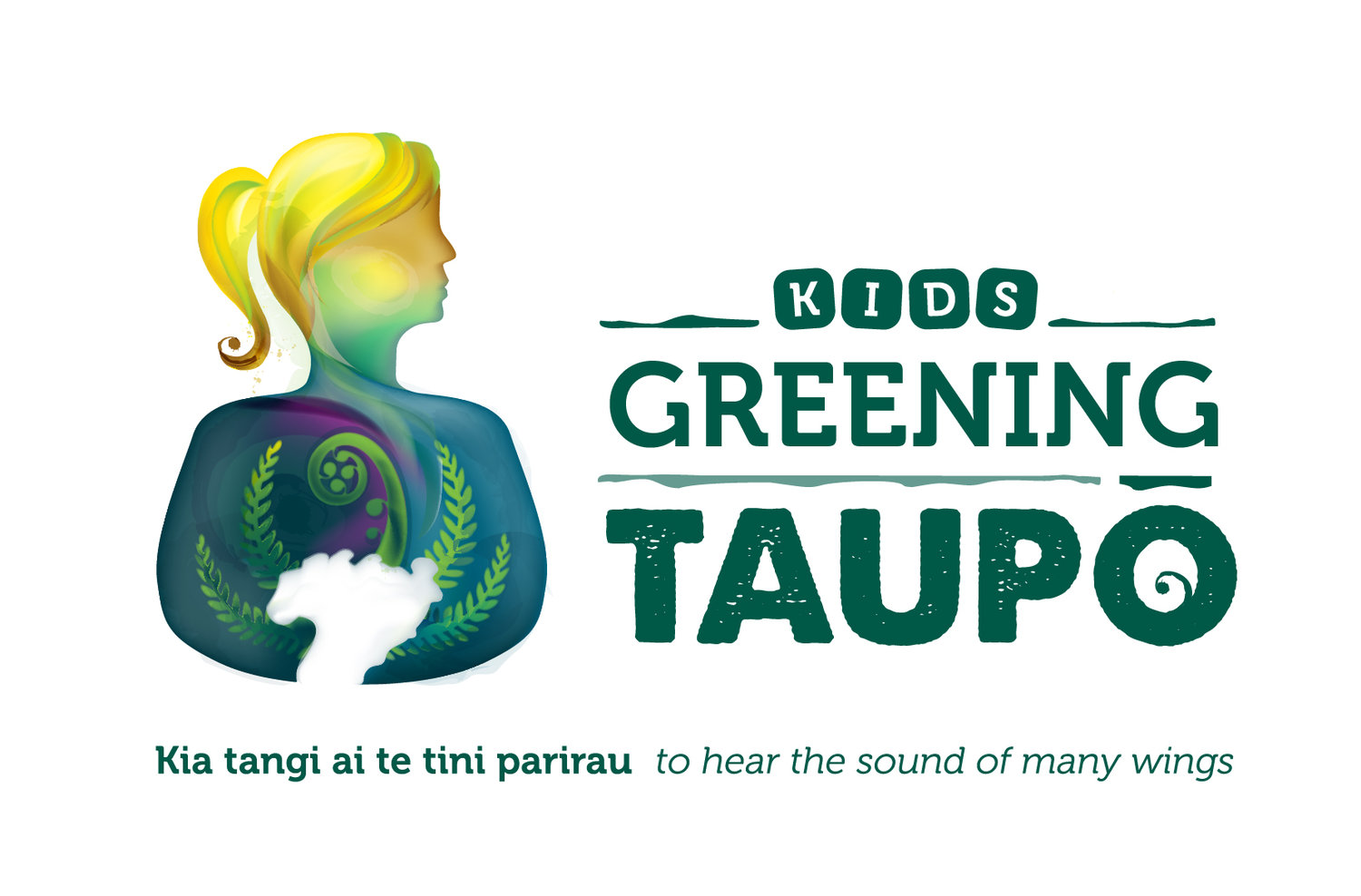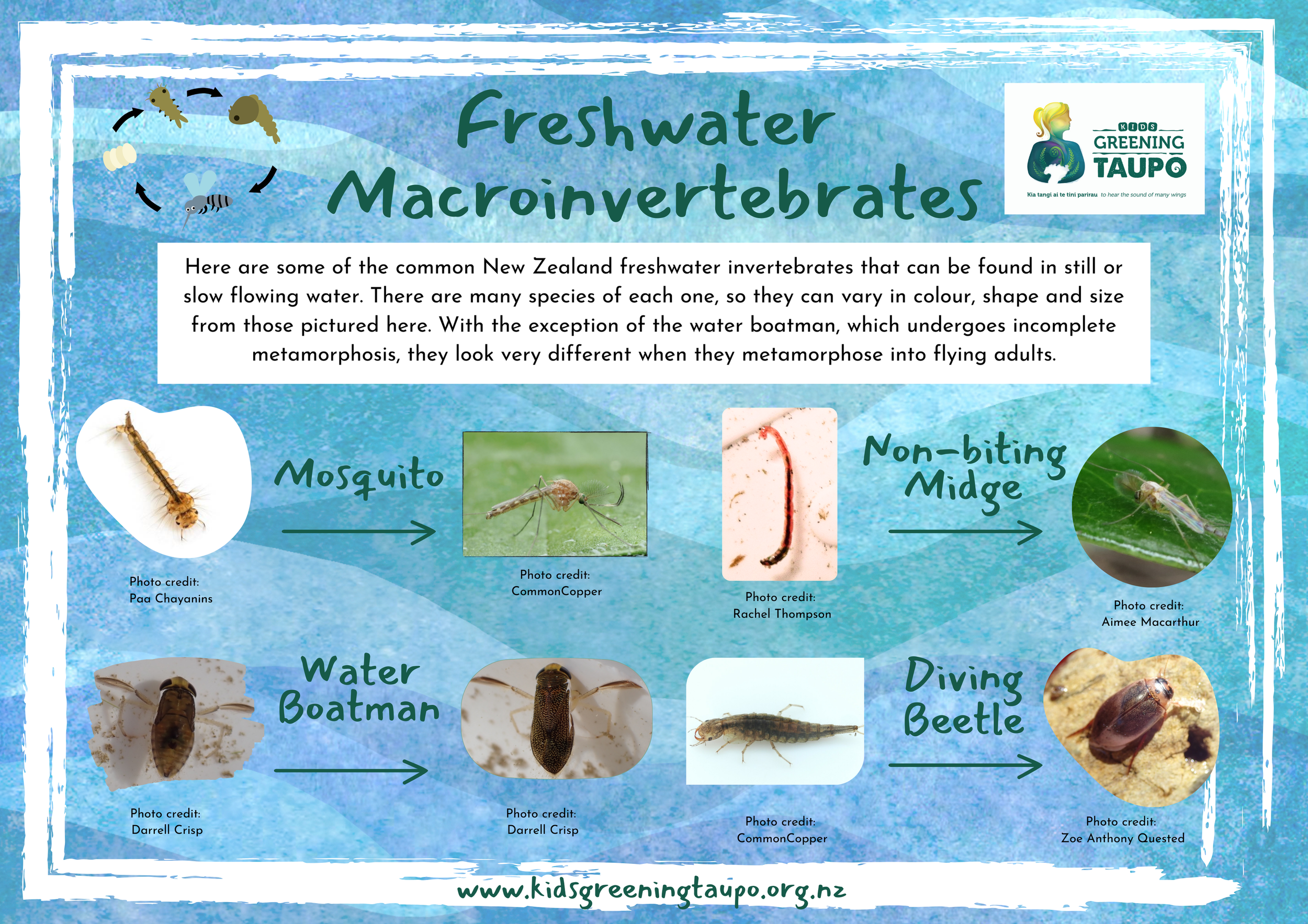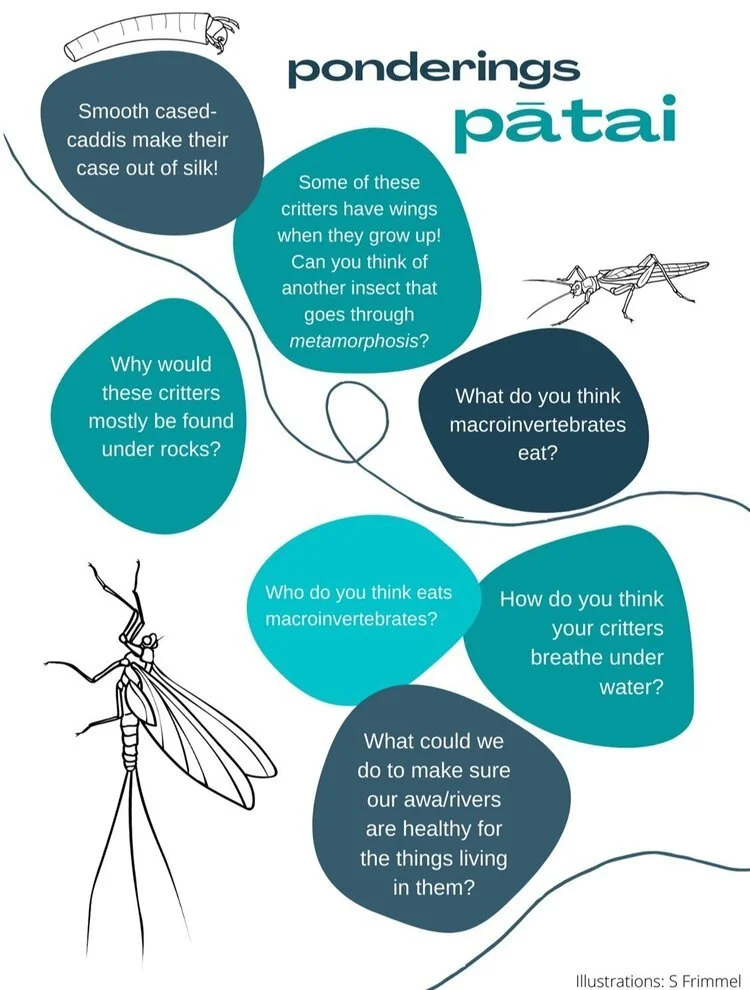Investigate Macroinvertebrates in a Stream/River
Head out to a local stream, river, lake, or pond with your whānau to learn about the cool creatures found living under the water and seen flying above it- freshwater macroinvertebrates.
What is a Freshwater Macroinvertebrate?
Freshwater macroinvertebrates are small creatures that live in our rivers and streams.
Freshwater- means they are not in salt water (not in the sea or ocean), they are in rivers, streams, ponds, or lakes.
Macro- means you can see them with your naked eye, without using a magnifying glass or microscope (although these things might help!)
Invertebrate- means they don’t have a backbone! They may be slimy or jelly-like, they may have a hard shell, or they may have an exoskeleton.
Why are Freshwater Macroinvertebrates so Special?
Did you know that scientists look for freshwater macroinvertebrates when they ae testing the water of a stream? They can indicate how clean the water is! Certain species are only found in very clean water, so if you find those ones, you know that the water is high quality.
Many freshwater macroinvertebrates will actually turn into insects that fly in the sky, such as dragonflies, mayflies, and even mosquitoes! They are in fact the larval stage of these insects and many spend far more time living underwater than they do as the insect that you recognise. Some of them live for years underwater before changing into winged insects that only live for a few days!
Try the activities below to find some freshwater macroinvertebrates, then learn more about what they will change into and how clean their water is. Have fun!
This awesome resource was shared with us by Orokonui Ecosanctuary
Activity- Look for Macroinvertebrates
Flip over some rocks and use a net to sweep around in the stream to catch anything that swims/crawls out. What can you find? While you study your macroinvertebrates, keep them in some water from the same place that you found them. Make sure they are in a shady cool spot, as they may die if their water gets too warm. It can be a good idea to have them in a white tray, as it makes it easier to see them. Try not to handle them, but if you do need to pick one up to put it into a separate container, gently scoop it up with a clean paintbrush.
Sampling methods:
If you have a sandy or muddy bottomed stream near you try these easy instructions.
For a rocky stream, try these.
Video examples of collecting macroinvertebrates from NIWA:
Identification guides to help you identify the cool creatures you see:
Print and laminate these ID sheets from Greater Wellington Regional Council in English and Te Reo Māori to take with you in the field
Use this web resource if you have access to the internet, or if you are identifying from photos taken in the field: Manaaki Whenua macro-invertebrates guide
Print a copy of this comprehensive identification guide from NIWA to identify the macro-invertebrates and the quality of the water that they live in.
Here’s an Algae ID card in English and te reo Māori from Wellington Regional Council
Activity: Learn about Life-Cycles
Once you have identified your macroinvertebrates, find out if they are the larvae of flying insects. Use our resources below to see pictures of what they will change into in the future! You can learn a few fun facts about them too. Download the pdfs of the KGT resources below here
Make sure to carefully release the macro-invertebrates that you caught back to the same place that they originally came from.
To learn more about River Ecosystems through fun activities and videos, visit:
Check out all of these cool activities and resources!
Kids Greening Taupō River Ecosystems Online Nature Classroom - A comprehensive unit for students and teachers with information, activities, videos and lots of links to other resources
If you would like to go exploring at night check out our Spotlighting Nature Connector.
Printable about the 4 C’s- How to tell if a river is healthy
Teachers, please check out this resource for teaching an inquiry unit around healthy harbours and this one about Freshwater education.
Here are some very cool posters about streams as a habitat, and restoring streams.
You can watch a video about how to get samples of freshwater macroinvertebrates.
Lots of other awesome school resources here from NZ Landcare Trust
Who Dirtied the Water?- Teacher resource activity
Stream Health Monitoring and Assessment- by Science Learning Hub
New Zealand Aquatic Insects - by Science Learning Hub
Padlet full of links to resources about each type of Freshwater Macroinvertebrate
Tour of the Tongariro National Trout Centre with Links to Resources
Print and laminate the above ID sheets from Greater Wellington Regional Council in English and Te Reo Māori to take with you in the field


















